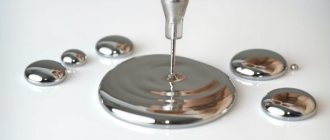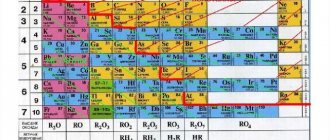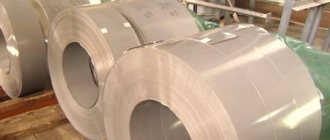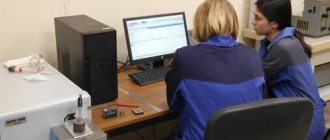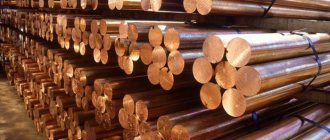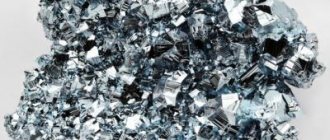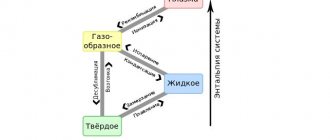One of the most common materials that people have always preferred to work with has been metal. In each era, preference was given to different types of these amazing substances. Thus, the IV-III millennium BC is considered the Chalcolithic, or Copper Age. Later it is replaced by bronze, and then the one that is still relevant today comes into force - iron.
Today it is generally difficult to imagine that it was once possible to do without metal products, because almost everything, from household items, medical instruments to heavy and light equipment, consists of this material or includes individual parts from it. Why did metals manage to gain such popularity? Let’s try to figure out what the features are and how this is inherent in their structure.
General concept of metals
"Chemistry. 9th grade" is a textbook used by schoolchildren. It is here that metals are studied in detail. A large chapter is devoted to the consideration of their physical and chemical properties, because their diversity is extremely great.
It is from this age that it is recommended to give children an idea of these atoms and their properties, because teenagers can already fully appreciate the significance of such knowledge. They see perfectly well that the variety of objects, machines and other things around them is based on a metallic nature.
What is metal? From the point of view of chemistry, these atoms are usually classified as those that have:
- a small number of electrons at the outer level;
- exhibit strong restorative properties;
- have a large atomic radius;
- As simple substances, they have a number of specific physical properties.
The basis of knowledge about these substances can be obtained by considering the atomic-crystalline structure of metals. It is this that explains all the features and properties of these compounds.
In the periodic table, most of the entire table is allocated to metals, because they form all the secondary subgroups and the main ones from the first to the third group. Therefore, their numerical superiority is obvious. The most common are:
- calcium;
- sodium;
- titanium;
- iron;
- magnesium;
- aluminum;
- potassium.
All metals have a number of properties that allow them to be combined into one large group of substances. In turn, these properties are explained precisely by the crystalline structure of metals.
Chemical properties of iron:
| 300 | Chemical properties | |
| 301 | Oxidation states | -4, -2, -1, 0, +1, +2 , +3 , +4, +5, +6 , +7 |
| 302 | Valence | II, III |
| 303 | Electronegativity | 1.83 (Pauling scale) |
| 304 | Ionization energy (first electron) | 762.47 kJ/mol (7.9024681(12) eV) |
| 305 | Electrode potential | Fe2+ + 2e— → Fe, Eo = -0.440 V, Fe3+ + e— → Fe2+, Eo = +0.771, Fe3+ + 3e— → Fe, Eo = -0.037 V |
| 306 | Electron affinity energy of an atom | 15.7 kJ/mol |
Properties of metals
The specific properties of the substances in question include the following.
- Metallic shine. All representatives of simple substances have it, and most have the same silvery-white color. Only a few (gold, copper, alloys) are different.
- Malleability and plasticity - the ability to deform and recover quite easily. It is expressed to different degrees in different representatives.
- Electrical and thermal conductivity are one of the main properties that determine the areas of application of a metal and its alloys.
The crystalline structure of metals and alloys explains the reason for each of the indicated properties and speaks about their severity in each specific representative. If you know the features of such a structure, then you can influence the properties of the sample and adjust it to the desired parameters, which is what people have been doing for many decades.
PROPERTIES
In its pure form under normal conditions it is a solid. It has a silver-gray color and a pronounced metallic luster. The mechanical properties of iron include its level of hardness on the Mohs scale. It is equal to four (average). Iron has good electrical and thermal conductivity. The last feature can be felt by touching an iron object in a cold room. Because this material conducts heat quickly, it removes most of it from your skin in a short period of time, which is why you feel cold. If you touch, for example, wood, you will notice that its thermal conductivity is much lower. The physical properties of iron include its melting and boiling points. The first is 1539 degrees Celsius, the second is 2860 degrees Celsius. We can conclude that the characteristic properties of iron are good ductility and fusibility. But that's not all. Also, the physical properties of iron include its ferromagnetism. What it is? Iron, whose magnetic properties we can observe in practical examples every day, is the only metal that has such a unique distinctive feature. This is explained by the fact that this material is capable of magnetization under the influence of a magnetic field. And after the end of the action of the latter, the iron, the magnetic properties of which have just been formed, remains a magnet for a long time. This phenomenon can be explained by the fact that in the structure of this metal there are many free electrons that are able to move.
Position of metals in the Periodic Table D.I. Mendeleev. Features of the structure of atoms, properties.
Objective of the lesson: 1. based on the position of metals in the PSCE, come to an understanding of the structural features of their atoms and crystals (metallic chemical bond and crystalline metal lattice). 2. Generalize and expand knowledge about the physical properties of metals and their classifications. 3. Develop the ability to analyze and draw conclusions based on the position of metals in the periodic table of chemical elements.
COPPER I go for a small coin, I love to ring bells, They erect a monument to me for this And they know: my name is….
IRON He can plow and build - he can do everything if a coal helps him with it...
Metals are a group of substances with common properties.
Metals are elements of groups I – III of the main subgroups, and groups IV-VIII of secondary subgroups I group II group III group IV group V group VI group VII group VIII group Na Mg Al Ti V Cr Mn Fe
Atomic crystal structure of metals
What is this structure, what is it characterized by? The name itself suggests that all metals are crystals in the solid state, that is, under normal conditions (except for mercury, which is a liquid). What is a crystal?
This is a conventional graphic image constructed by intersecting imaginary lines through the atoms that line up the body. In other words, every metal is made up of atoms. They are located in it not chaotically, but very correctly and consistently. So, if you mentally combine all these particles into one structure, you will get a beautiful image in the form of a regular geometric body of some shape.
This is what is commonly called the crystal lattice of a metal. It is very complex and spatially voluminous, therefore, for simplicity, not all of it is shown, but only a part, an elementary cell. A set of such cells, collected together and reflected in three-dimensional space, forms crystal lattices. Chemistry, physics and metallurgy are sciences that study the structural features of such structures.
The unit cell itself is a set of atoms that are located at a certain distance from each other and coordinate a strictly fixed number of other particles around themselves. It is characterized by packing density, distance between constituent structures, and coordination number. In general, all these parameters are characteristics of the entire crystal, and therefore reflect the properties exhibited by the metal.
There are several types of crystal lattices. They all have one feature in common: the nodes contain atoms, and inside there is a cloud of electron gas, which is formed by the free movement of electrons inside the crystal.
Physical properties of iron:
| 400 | Physical properties | |
| 401 | Density | 7.874 g/cm3 (at 0 °C/20 °C and other standard conditions, state of matter - solid), 6.98 g/cm3 (at a melting point of 1538 °C and other standard conditions, the state of the substance is liquid), 6.9 g/cm3 (at 1589 °C and other standard conditions, state of matter – liquid) |
| 402 | Melting temperature* | 1538 °C (1811 K, 2800 °F) |
| 403 | Boiling temperature* | 2861 °C (3134 K, 5182 °F) |
| 404 | Sublimation temperature | |
| 405 | Decomposition temperature | |
| 406 | Self-ignition temperature of a gas-air mixture | |
| 407 | Specific heat of fusion (enthalpy of fusion ΔHpl)* | 13.81 kJ/mol |
| 408 | Specific heat of evaporation (enthalpy of boiling ΔHboiling)* | 340 kJ/mol |
| 409 | Specific heat capacity at constant pressure | 0.448 J/g K (at 25 °C), 0.64 J/g K (at 0-1000 °C) |
| 410 | Molar heat capacity* | 25.10 J/(K mol) |
| 411 | Molar volume | 7.1 cm³/mol |
| 412 | Thermal conductivity | 80.4 W/(m K) (at standard conditions), 80.4 W/(m K) (at 300 K) |
| 413 | Thermal expansion coefficient | 11.8 µm/(MK) (at 25 °C) |
| 414 | Thermal diffusivity coefficient | |
| 415 | Critical temperature | |
| 416 | Critical pressure | |
| 417 | Critical Density | |
| 418 | Triple point | |
| 419 | Vapor pressure (mmHg) | |
| 420 | Vapor pressure (Pa) | |
| 421 | Standard enthalpy of formation ΔH | |
| 422 | Standard Gibbs energy of formation ΔG | |
| 423 | Standard entropy of matter S | |
| 424 | Standard molar heat capacity Cp | |
| 425 | Enthalpy of dissociation ΔHdiss | |
| 426 | The dielectric constant | |
| 427 | Magnetic type | |
| 428 | Curie point* | |
| 429 | Volume magnetic susceptibility | |
| 430 | Specific magnetic susceptibility | |
| 431 | Molar magnetic susceptibility | |
| 432 | Electric type | |
| 433 | Electrical conductivity in the solid phase | |
| 434 | Electrical resistivity | |
| 435 | Superconductivity at temperature | |
| 436 | Critical magnetic field of superconductivity destruction | |
| 437 | Prohibited area | |
| 438 | Charge carrier concentration | |
| 439 | Mohs hardness | |
| 440 | Brinell hardness | |
| 441 | Vickers hardness | |
| 442 | Sound speed | |
| 443 | Surface tension | |
| 444 | Dynamic viscosity of gases and liquids | |
| 445 | Explosive concentrations of gas-air mixture, % volume | |
| 446 | Explosive concentrations of a mixture of gas and oxygen, % volume | |
| 446 | Ultimate tensile strength | |
| 447 | Yield strength | |
| 448 | Elongation limit | |
| 449 | Young's modulus | |
| 450 | Shear modulus | |
| 451 | Bulk modulus of elasticity | |
| 452 | Poisson's ratio | |
| 453 | Refractive index |
Types of crystal lattices
Fourteen lattice structure options are usually combined into three main types. They are as follows:
- Body-centered cubic.
- Hexagonal close-packed.
- Face-centered cubic.
The crystal structure of metals was studied only through electron microscopy, when it became possible to obtain high magnification images. And the classification of types of lattices was first given by the French scientist Bravais, by whose name they are sometimes called.
Metal connection
When studying the atomic-crystalline structure of metals, a few words should be said about the features of the chemical bond between the elements under consideration. Since the electronegativity of metals is low, when combining into a crystal lattice, each atom gives up one or more valence electrons. These electrons are weakly bound to the nucleus, so they easily break away from it even at room temperatures.
The collection of valence electrons that move freely in the space between the ionic cores in the crystal lattice of metals is called electron gas. Thanks to it, a piece of metal easily conducts heat and electricity.
The electric field of the positively charged ionic cores is compensated by the negative field of the electron gas “smeared” throughout the volume of the metal. This bond is called metallic. It is fundamentally different from other types of chemical bonds. For example, in covalent atoms do not give up electrons into the interatomic space; they become shared only by two atoms. On the contrary, in an ionic bond, one atom completely deprives the second of valence electrons, adding them to itself and acquiring a negative charge.
Body-centered lattice
The structure of the crystal lattice of metals of this type is the following structure. This is a cube with eight atoms at its nodes. Another one is located in the center of the free internal space of the cell, which explains the name “body-centered”.
This is one of the options for the simplest structure of the unit cell, and therefore the entire lattice as a whole. The following metals have this type:
- molybdenum;
- vanadium;
- chromium;
- manganese;
- alpha iron;
- beta iron and others.
The main properties of such representatives are a high degree of malleability and ductility, hardness and strength.
Unit cell and types of lattices
We said in Quantum No. 10 for 2021 that a molecule is a “minimum piece” of a substance, which also determines its chemical properties: taking many such pieces, we get as much of this substance as we want. For a crystalline substance, the “minimum quantity” that still completely defines it is not a molecule, but a unit cell
. This is the smallest piece of the lattice, from copies of which the entire lattice can be made.
For example, the crystal lattice of table salt is obtained by repeating the following piece many times: Na - Cl. This is the unit cell of salt; it has two atoms. And in the unit cell of polonium there is only one atom (Fig. 5). Such a crystal lattice is called a simple cubic lattice.
: the entire crystal can be made up of identical cubes, each containing one atom (one of these cubes is highlighted in blue in the figure). This is the elementary cell.
Rice. 5.
A simple cubic lattice and its unit cell
Note! The black lines that show the bonds between ions in this and the following figures also form cubes. But it is more convenient to “cut” (even mentally) a crystal into cells not along them - otherwise the atoms will end up on the boundaries of the cuts, and we will easily get confused, figuring out whether this atom is “counted” inside this or that cube. It's better to just move our imaginary (blue) grid of elementary cells.
The next most complex type of lattice is one in which the atoms are located not only at the tops of the cubes drawn with black link sticks, but also in the center of each cube (Fig. 6, left
).
This is how, for example, iron crystals are structured. And other atoms - for example, copper and gold - prefer to be built in face-centered
lattices, in which the atoms stand at the tops of cubes and at the centers of their faces (Fig. 6,
right
).
Rice. 6.
Cubic lattices: body-centered and face-centered
Problem 5
Draw the elementary cells of the crystal lattices of iron and gold.
How many atoms are in each of them? If it is difficult to immediately understand the three-dimensional picture, first draw a “square edge-centered” lattice on a plane and find out what its elementary cell is. AnswerIn a square edge-centered lattice on a plane, there are 3 atoms in a unit cell: when shifting the blue square up and down and left and right, one will produce all the “node” atoms, the other will produce all the centers of the horizontal edges, and the third will produce the centers of the vertical ones.
In the unit cell of iron (body-centered lattice) there are two atoms: one of those located in the black lattice node, and one in the center of the black lattice cell. The remaining nodes and centers of cells are obtained by shifting the unit cell.
In a gold cell (face-centered lattice) there are 4 atoms: a “node” and 3 centers of faces - horizontal, frontal and lateral.
As we saw with the example of carbon, there are also non-cubic lattices: in graphite, for example, the unit cell has the shape of a hexagonal prism.
Problem 6
One persistent schoolboy decided to make an exact model of the crystal lattice of an iron cube with a side of 1 mm from plasticine and matches.
The distance between iron atoms in neighboring lattice sites is only 3 angstroms (written 3 Å), 1 Å = 10−10 m (one ten-billionth of a meter). What size will the model be? AnswerThe length of the match is 4 cm. This means that the model will be larger than the original 4 cm 3 Å = 4 3 · 10 8 = 4 3 · 100000000 times. The model of a piece 1 mm in size will be a match cube with a side length of 4 3 · 10 8 mm = 4 3 · 10 5 m ≈ 130 km, this is the transverse size of a small European country. And 130 km in height is already beyond the boundary of the atmosphere! It is unlikely that anyone will cope with such a task...
Face-centered lattice
The crystal structure of metals having a face-centered cubic lattice is the following structure. This is a cube that includes fourteen atoms. Eight of them form lattice nodes, and another six are located, one on each face.
They have a similar structure:
- aluminum;
- nickel;
- lead;
- gamma iron;
- copper.
The main distinctive properties are shine of different colors, lightness, strength, malleability, increased resistance to corrosion.
Periodic table and metals
In the 19th century, thanks to his brilliant mind and many years of work, Dmitry Ivanovich Mendeleev compiled a table, collecting all the chemical elements known at that time. Each of them is assigned a specific position in the table in accordance with the number of protons in the atomic nucleus. The entire table is divided into 7 periods (horizontal rows) and 8 groups (vertical rows). The longer the period, the larger the radius of the atom of the corresponding element, and the higher its valence electrons are located in orbitals. On the contrary, the older the group (movement along the table from left to right), the more valence electrons are in the last orbital and the smaller the radius of the atom.
Any element of the table can be conditionally classified as either metals or non-metals. The metals are located on the left side of the boron (B) – polonium (Po) diagonal. If you look at the table, you can immediately understand that the number of metals is several times greater than the number of non-metals.
Read also: M24 standard thread pitch
Hexagonal lattice
The crystal structure of metals with this type of lattice is as follows. The unit cell is based on a hexagonal prism. There are 12 atoms at its nodes, two more at the bases, and three atoms lie freely inside the space in the center of the structure. There are seventeen atoms in total.
Metals such as:
- alpha titanium;
- magnesium;
- alpha cobalt;
- zinc.
The main properties are a high degree of strength, strong silver shine.
Basic properties of copper
Physical properties.
In air, copper acquires a bright yellowish-red hue due to the formation of an oxide film. Thin plates have a greenish-blue color when examined through them. In its pure form, copper is quite soft, malleable and easily rolled and drawn. Impurities can increase its hardness.
The high electrical conductivity of copper can be called the main property that determines its predominant use. Copper also has very high thermal conductivity. Impurities such as iron, phosphorus, tin, antimony and arsenic affect the basic properties and reduce electrical and thermal conductivity. According to these indicators, copper is second only to silver.
Copper has high densities, melting points and boiling points. An important property is also good resistance to corrosion. For example, at high humidity, iron oxidizes much faster.
Copper lends itself well to processing: it is rolled into copper sheets and copper rods, and drawn into copper wire with a thickness brought to thousandths of a millimeter. This metal is diamagnetic, that is, it is magnetized against the direction of the external magnetic field.
Chemical properties.
Copper is a relatively low-active metal. Under normal conditions in dry air, its oxidation does not occur. It reacts easily with halogens, selenium and sulfur. Acids without oxidizing properties have no effect on copper. There are no chemical reactions with hydrogen, carbon and nitrogen. In humid air, oxidation occurs to form copper (II) carbonate, the top layer of platinum. Copper is amphoteric, meaning it forms cations and anions in the earth's crust. Depending on the conditions, copper compounds exhibit acidic or basic properties.
Defects in the crystal structure of metals
However, all types of cells considered may also have natural shortcomings, or so-called defects. This may be due to various reasons: foreign atoms and impurities in metals, external influences, and so on.
Therefore, there is a classification that reflects the defects that crystal lattices may have. Chemistry as a science studies each of them in order to identify the cause and method of elimination so that the properties of the material are not changed. So, the defects are as follows.
- Spot. They come in three main types: vacancies, impurities or dislocated atoms. They lead to deterioration of the magnetic properties of the metal, its electrical and thermal conductivity.
- Linear or dislocation. There are edge and screw ones. They deteriorate the strength and quality of the material.
- Surface defects. Affects the appearance and structure of metals.
Currently, methods have been developed to eliminate defects and obtain pure crystals. However, it is not possible to completely eradicate them; an ideal crystal lattice does not exist.
Real metal crystal
Whatever the chemical metal element is considered to be, it is actually a solid substance in which small single crystals (grains) are bonded together in various orientations. This structure forms a polycrystal. In addition to grain boundaries, it contains defects of all four types, including impurities of non-metals such as oxygen, nitrogen and hydrogen. The latter, due to its size, easily penetrates into any crystal lattice and forms solid phases with its ions, which lead to embrittlement of the metal, which is one of the pressing problems of metal science.
The importance of knowledge about the crystalline structure of metals
From the above material, it is obvious that knowledge about the fine structure and structure makes it possible to predict the properties of the material and influence them. And the science of chemistry allows you to do this. The 9th grade of a general education school places emphasis in the learning process on developing in students a clear understanding of the importance of the fundamental logical chain: composition - structure - properties - application.
Information about the crystalline structure of metals very clearly illustrates this dependence and allows the teacher to clearly explain and show children how important it is to know the fine structure in order to correctly and competently use all the properties.
Crystalline or amorphous?
In fact, all “truly solid” substances that retain their shape well are crystalline. Although plasticine or clay, for example, when they dry out, are quite solid and do not have a crystalline structure at all. Such substances are called amorphous
(having no form): the molecules (or atoms) in them are not built in a strict order, but are “sketched” more or less haphazardly. It often happens that the same molecules can form both a crystalline and an amorphous substance (think diamond, graphite, coal and soot). In order for the atoms to have time to “build” into a crystal, the molten substance must cool slowly enough. If you cool it faster, you get an amorphous body.
Crystalline substances have a certain melting point, each with its own; if you heat them to this temperature, they sharply change their properties and melt, turning into liquid: the crystal falls apart into individual molecules. Amorphous bodies do not have a specific melting point; when heated, they gradually become more and more fluid. The molecules (or atoms) in them are already arranged as in a liquid.
Problem 4
When heated, amorphous bodies (for example, glass) become more “liquid” and the molecules in them become more mobile.
Why does clay, when fired, become not soft, but very hard? AnswerWhen fired, all the water that ensured the mobility of the clay evaporates from the clay; chemical reactions take place: clay consists of different components, and some of them - organic additives - burn out, the other part is “rebuilt”. So the clay before firing and the ceramics obtained after are two different substances.
